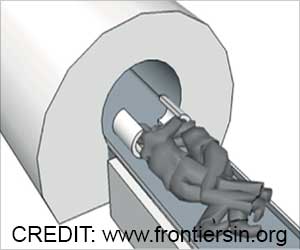Groundbreaking study identifies brain activity patterns and regions associated with chronic pain.
- Researchers have identified distinct brain activity associated with chronic pain
- The research opens up possibilities for developing personalized brain stimulation therapies for severe chronic pain //
- It also paves the way for potential advancements in wearable devices and less invasive methods of monitoring and managing chronic pain
Seminal Research Reveals Unique Brain Activity Patterns in Chronic Pain
Chronic pain was processed by the orbitofrontal cortex (OFC), a region that has received little attention in pain medicine. This area is linked to decision-making, emotion, and reward. Short-term pain signals, on the other hand, appeared to be controlled by the anterior cingulate cortex (ACC), which has already been extensively involved in the emotional processing of pain (1✔ ✔Trusted SourceInflammatory pain disrupts the orbitofrontal neuronal activity and risk-assessment performance in a rodent decision-making task
Go to source).
The electrodes were implanted into the brains of four persons suffering from neuropathic pain, which is caused by damage to the nervous system itself, for the study. Three of the patients had persistent pain as a result of a stroke, and the fourth suffered phantom limb pain.
Shirvalkar explained that the electrodes carefully targeted the OFC and the ACC because previous research had shown that both regions lit up during acute pain testing.
"In the past, when people tried using brain stimulation to treat chronic pain, they really targeted brain circuits focusing on the physical touch dimension, physical pain," Shirvalkar explained. "We reasoned that circuits in the brain that represent the emotional or cognitive aspects of pain may be more important for understanding what individual patients are going through."
The participants were asked to rate their pain on a daily basis – how strong it was, what sort it was, and how it made them feel emotionally.
Using computer analysis, the researchers discovered that chronic pain relied more on the OFC, resulting in prolonged abnormalities in brain waves that serve as a biomarker for chronic pain.
"We discovered that chronic pain can be successfully tracked and predicted in the real world while patients are walking their dog, at home, when they get up in the morning, and going about their lives," Shirvalkar said. "We actually devised a goal."
Delivering Heat to the Body to Map out Pain
The heat was also delivered to different parts of the participants' bodies to see how their brains responded to short-term (acute) discomfort. Brain activity could predict pain responses in two of the four patients, although the ACC appeared to be the region most involved in managing acute pain.Because these devices can also offer deep brain stimulation, researchers seek to develop a "pacemaker" for the brain that controls imminent chronic pain, according to Shirvalkar.
"We are currently recruiting for a clinical trial to try to develop this therapy in patients," he explained. The goal is to recruit six patients for the next study phase before expanding to 20 or 30 people.
Shirvalkar speculated that it would be possible to develop a less invasive method of monitoring a person's chronic pain by utilizing a wearable device that evaluates signals from these brain regions.
According to Dr. Desimir Mijatovic, a pain management physician at the Cleveland Clinic in Ohio, the insights acquired from this study may also help direct less intrusive strategies to manage chronic pain.
"There are already some treatments being tried, such as transcranial magnetic stimulation, which can actually target these parts of the brain and try to alter how they function," Mijatovic explained. "It's an external magnetic signal that is applied to the brain and attempts to alter the way electrical signals are transmitted." This research could perhaps provide further information on.
According to Dr. David Dickerson, chair of the American Society of Anesthesiologists Committee on Pain Medicine, the new study, published May 22 in the journal Nature Neuroscience, gives more weight to the concept that chronic pain behaves significantly differently from acute pain.
"From a clinical standpoint, they are very different phenomena, with acute pain being protective and chronic pain being pathologic," Dickerson explained. "Chronic pain does not shield us from harm." Our protective machinery is malfunctioning. And what we're finding here is that it's in a different section of the brain."
Reference:
- Inflammatory pain disrupts the orbitofrontal neuronal activity and risk-assessment performance in a rodent decision-making task - (https://pubmed.ncbi.nlm.nih.gov/22609429/)
Source-Medindia
















